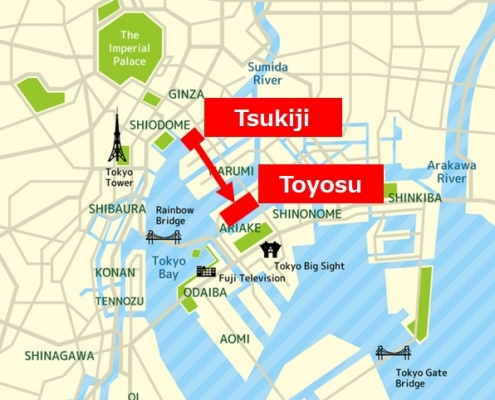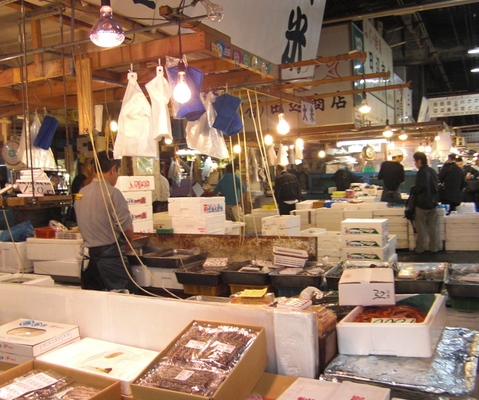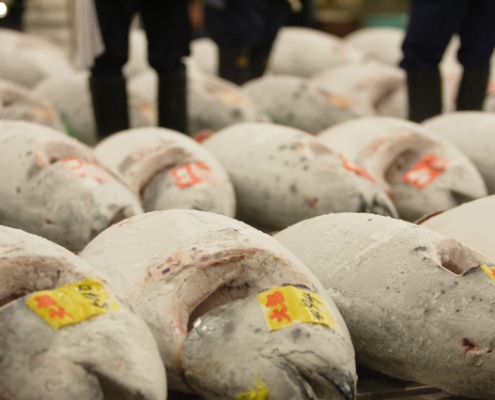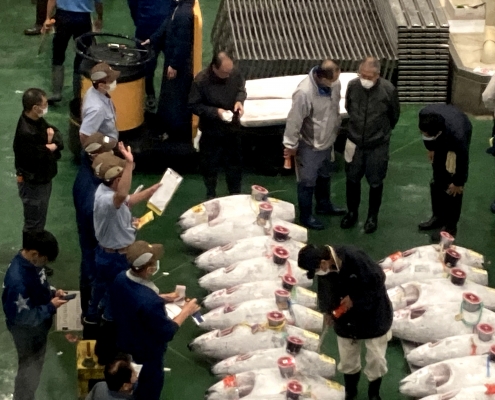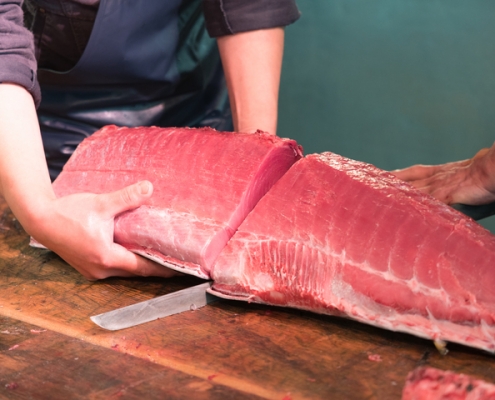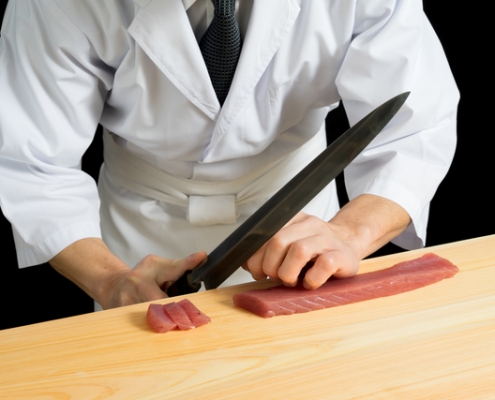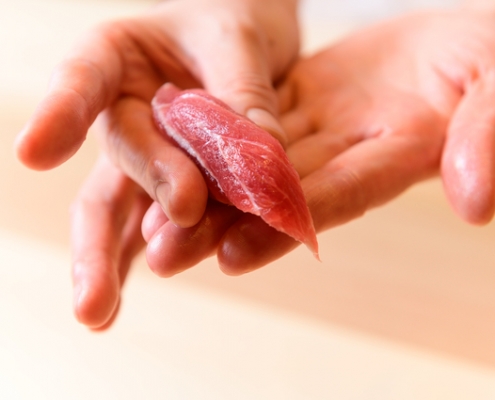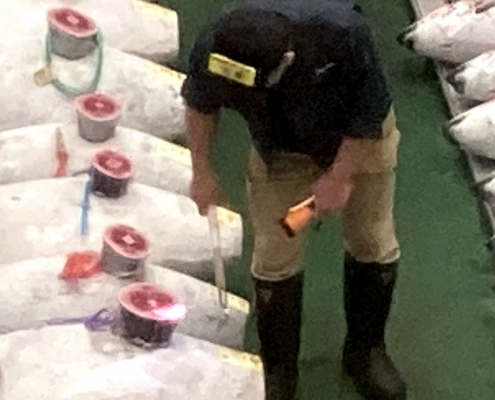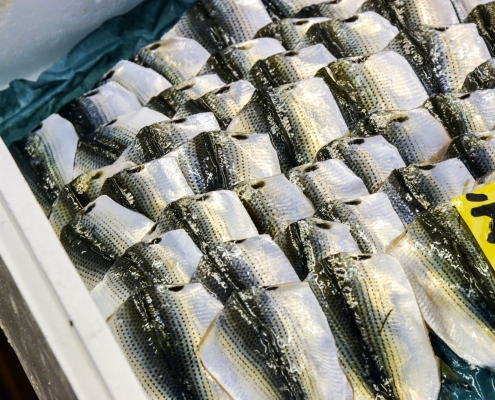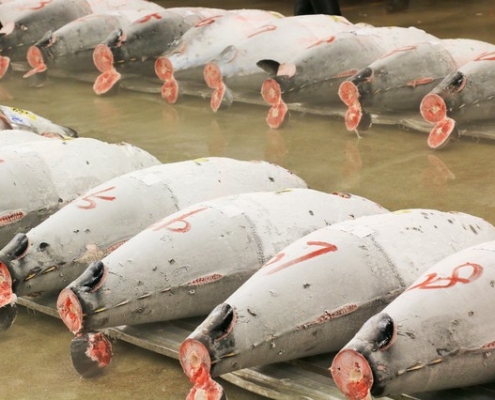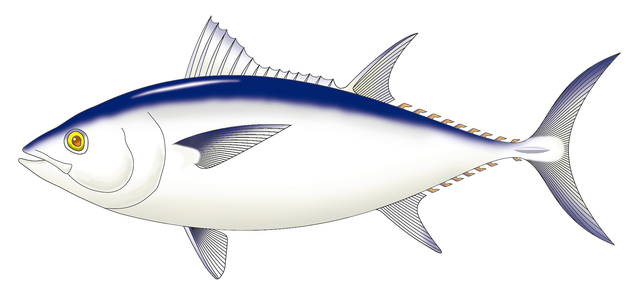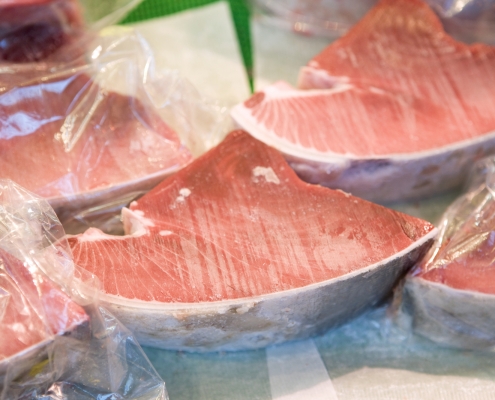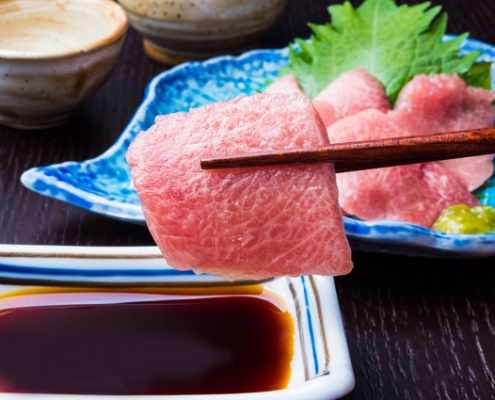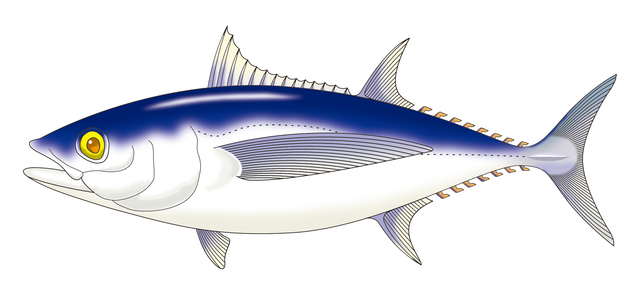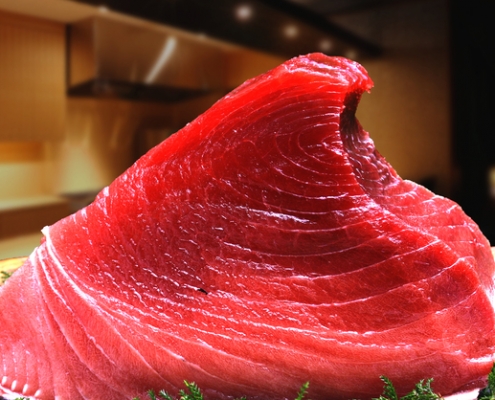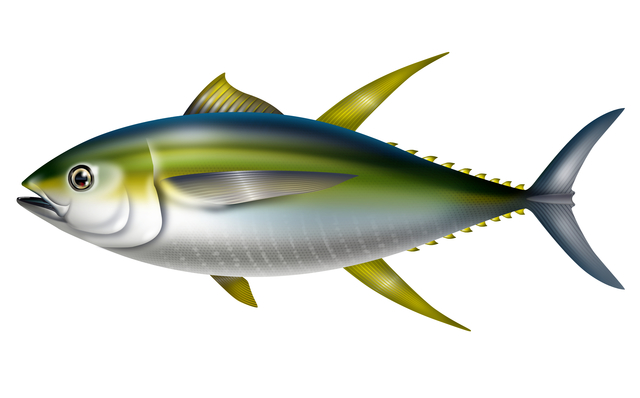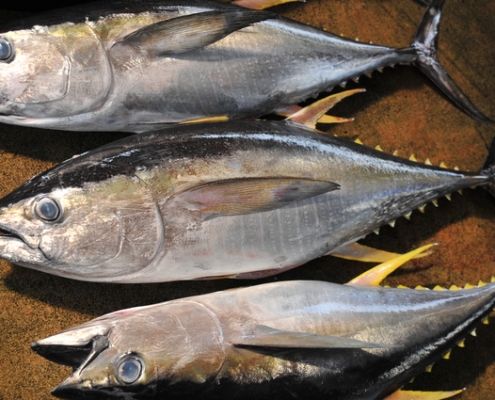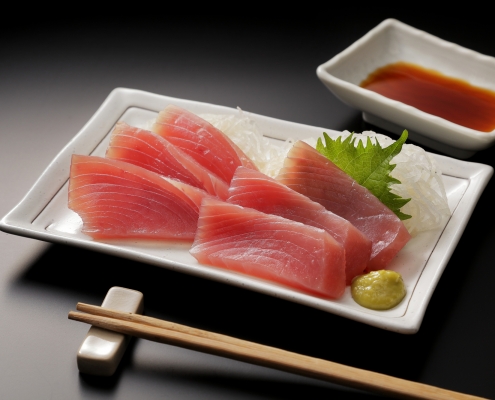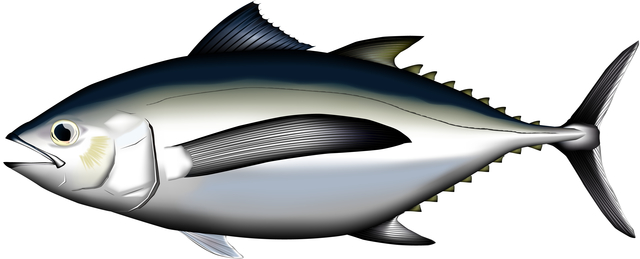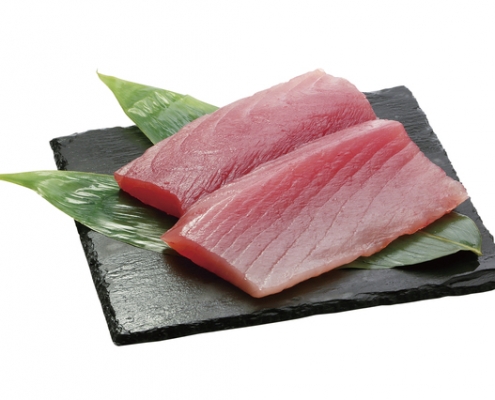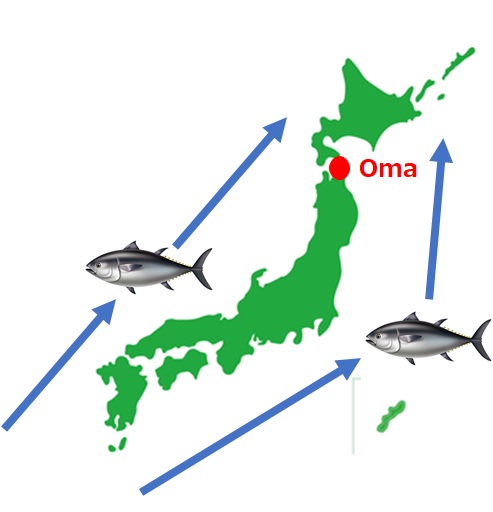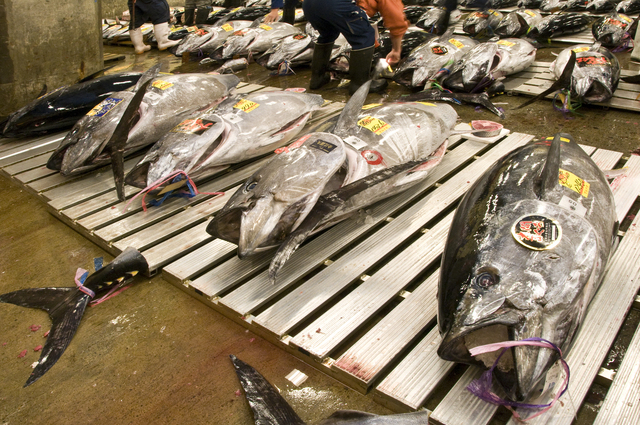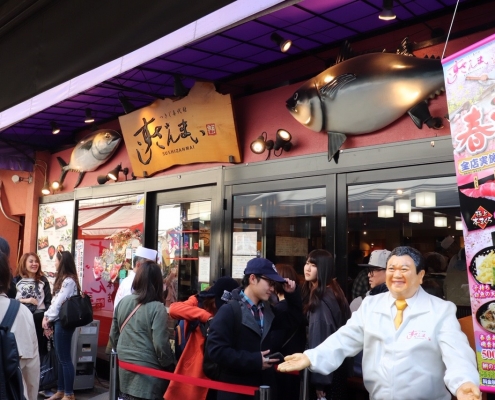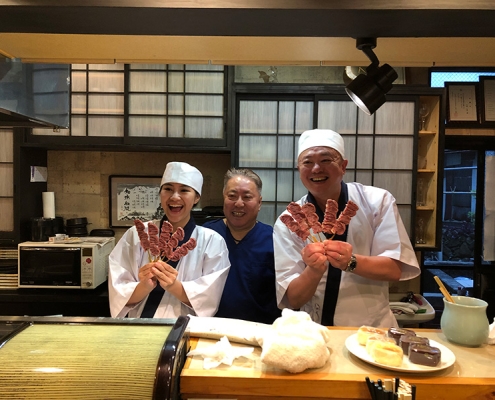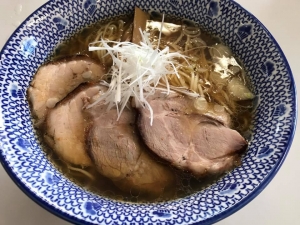Why Are Japanese People So Enthusiastic about the First Tuna Auction of the Year?
January 5th 2021 Updated

The New Year’s holidays in Japan (from January 1 to around January 7) mean special to a lot of people, since they can take off from their busy work and spend quality time with their family.
You can guess how important this holiday is if I say it is like Christmas in Europe and the U.S. or the Lunar New Year for Chinese people. It may seem that Japanese people are obsessed with work, but during this holiday season, they can put their computer or cell phone aside, enjoy sashimi and sake, and watch TV while lounging on the floor for days.
In the last decade or so, the first tuna auction of the year has been drawing attention during the New Year’s holidays. TV and Internet media are flooded with morning news about who purchased tuna for what price at the auction. The first auction of the year is becoming a huge event that attracts attention from not only Japanese people but also any fans of Japanese cuisine around the world.
In particular, the first tuna auction of 2019 in January became global news. Mr. Kimura or the “Tuna King,” the owner of Sushizanmai, bought a 278-kg bluefin tuna caught in Oma, Aomori prefecture, for 333.6 million JPY (Approx. more than 3 million USD).
The tuna cost 1.2 million JPY per kg. One sushi piece alone would have cost 200 to 300 USD, but Mr. Kimura sold sushi made of this tuna for a usual price, that is, 3 to 4 USD a piece, on that day. In front of his restaurant in Tsukiji, a long line was formed by those who came to taste high-end tuna, as “hatsumono” (the first produce of the season) that brings good luck.
“Why are Japanese people so enthusiastic about the first tuna auction of the year?”
“Why do people pay so much?”
“Who is the ‘Tuna King,’ a man who wins the auction every year?”
Since friends overseas ask me these questions every year, we write this article to answer them.
Contents
What is the Toyosu Market?
Let’s start with the Toyosu Market where the auction is held. There are many renowned fish markets in the world, such as the Mercamadrid in Spain, the Sydney Fish Market in Australia, the Fulton Fish Market in New York, the Billingsgate Fish Market in London, or the Aberdeen Fish Market in Hong Kong.
Yet if we speak of the best fish market in the world in 2020, anyone would name the Toyosu Market both in terms of the amount and quality of seafood (The market was transferred from Tsukiji in October, 2018).
This market is located along Tokyo Bay, 3 to 4 km southeast of central Tokyo. 400 to 500 kinds of seafood are traded here and distributed to fill stomachs across the world.
Address:
Toyosu Market
6-6-1 Toyosu Koto-ku Tokyo Japan
The market was in Tsukiji till 2018, but due to the aging facilities, it was moved to Toyosu in October, 2018. The first auctions of 2019 and 2020 were held at the Toyosu Market.
Tsukiji Market (Before Oct. 2018)
Toyosu Market (After Oct. 2018)
What is a Tuna Auction?
The tuna auction is held at the Toyosu Market from 5:30 am, 5 to 6 days a week.
The number varies each day, but on average 200 fresh tunas and 1,000 frozen tunas are placed on the auction block.
Five wholesalers host the tuna auction at the Toyosu Market and about 200 intermediate wholesalers are permitted to participate.
Auctioneers to Intermediate Wholesalers
These intermediate wholesalers come to the auction at the request of domestic sushi restaurants, supermarkets, department stores, and overseas restaurants.
They participate in the auction to fulfill these stores’ needs for particular types of tuna.
Intermediate Wholesalers to Restaurants
Restaurants to Customers
Since it takes time to land a tuna on the boat, its body temperature can rise meanwhile and “burn” the meat. You cannot tell its quality until the tuna is opened up after the auction.
Before the auction, buyers check the fish carefully and determine if it is worth buying. They examine where the tail is cut off with a flashlight and turn over the belly with a hook to check its fattiness.
As of August 2020, bluefin tuna caught in Japan is traded for 2,500 to 14,000 JPY per kg (Approx. 24USD to 130USD/kg).
The price went higher and higher up to 1.2 million JPY per kg, when two companies bid against each other, since they wanted hatsumono at the first auction.
Japanese People and Hatsumono
Since old times, it is believed in Japan that eating hatsumono will give you a long life and bring good luck. It is considered “iki (粋)” (stylish, having a refined taste) to eat seasonal ingredients first and even today, sushi aficionados rush to a restaurant to enjoy shinko (young Gizzard shad) when it starts to arrive on the market in June.
Since old times, it is believed in Japan that eating hatsumono will give you a long life and bring good luck. It is considered “iki (粋)” (stylish, having a refined taste) to eat seasonal ingredients first and even today, sushi aficionados rush to a restaurant to enjoy shinko (young Gizzard shad) when it starts to arrive on the market in June.
It is also considered “iki” to drink first flush tea in May and Japanese people love to buy Beaujolais Nouveau when it is released in November. You can get a sense of how much people love hatsumono in Japan.
The best season for bluefin tuna is supposed to be winter, but tuna during the New Year’s holidays is not necessarily the first catch of the season. Because of multiple factors, including the fact that the Toyosu Market is an important site as “Japan’s stomach,” that it is the first auction of the year, and that Japanese people love tuna, the tuna auction is now a big event and involves not only market workers but the public that wonder who will buy hatsumono of the year.
“Black Diamond,” Bluefin Tuna
There are mainly five kinds of tuna traded at the Toyosu Market: bluefin, southern bluefin, bigeye, yellowfin, and albacore.
Bluefin tuna
Bluefin tuna can be found around the world—the Pacific, Atlantic, and Mediterranean Sea—but those caught off the shore of Japan has the best flavor and are served at most of the high-end sushi restaurants for their omakase (chef’s choice) course meal.
Since this tuna is traded for a high price, it is called the “black diamond.” Bluefin is what the first auction of the year trades.
Southern bluefin tuna
Southern bluefin tuna is a little smaller than bluefin. We can say it is the second most expensive tuna. The name comes from the fact that they live in the southern hemisphere, near Australia, New Zealand, and Cape Town.
Bigeye tuna (Mebachi)
This tuna is served at ordinary sushi restaurants for an affordable price. Whereas bluefin tuna caught in Japan is traded for 2,500 to 14,000 JPY per kg as of August 2020, bigeye caught in Japan is relatively low-priced for 1,000 to 3,000 JPY per kg.
Yellowfin tuna (Kihada)
Yellowfin is caught the most in the world and we see it everywhere as sashimi at inexpensive izakaya (a Japanese-style pub) or at supermarkets.
It is also well-known as canned tuna.
Albacore tuna (Bincho or Bin-naga)
Albacore is called “bincho” or “bin-naga” in Japanese. Like yellowfin tuna, this kind is known as canned tuna, but it can also have a flavor like toro (a fatty part of tuna) in its season.
So, it is popular as “Bin-toro,” that is, bincho like toro, for its low price at kaiten-zushi restaurants (a restaurant that serves sushi on a conveyor belt).
Bluefin from Oma, the Best of the Kind
It is common at omakase sushi restaurants in Japan to show where the fish is caught. Among bluefin tunas, those caught in Oma, Aomori, from November to January are regarded as the best of the kind.
Bluefins caught in Japan are born in the Pacific Ocean off the shore of the Philippines. They travel northward on ocean currents along the Japanese archipelago. Oma in Aomori is facing the area where a large amount of planktons gather because of the currents. Bluefin tunas come to hunt squid and Pacific saury that eat these planktons, so around November to January, high-quality fatty bluefin tunas can be caught in this ground.
It is not that every bluefin caught in Oma is of high quality. Yet partly because there was a super popular TV program from the 1990s to 2000s in which celebrities tried to catch tuna in Oma, the name brand was established among Japanese people for “Oma in Aomori, the best tuna fishing ground in Japan.”
For your information, most of the tunas traded at high prices at the first auctions of the year in the 2000s are bluefin tunas from Oma.
2008 Challenge of Itamae Sushi
Even for the tuna from Oma at the first auction of the year, the price did not reach this high about 15 years ago.
A big turning point dates back to the first auction of 2008. You can read about this story in detail in Ippo Nakahara’s Maguro no Saikoho (The Best of Tuna). Only Japanese buyers had been participating in the first auction of the year, but Itamae Sushi, a Hong Kong-based company nicknamed as the “Sushi King in Hong Kong,” won the bid in this year. To put it more precisely, Yamayuki, an intermediate wholesaler, joined the auction at the request of Itamae Sushi in Hong Kong and won the bid. This tuna was distributed to Itamae Sushi, which had just started its business in Japan back then.
At this auction, the 276-kg bluefin tuna caught off Oma was bought for 6.07 million JPY (22,000 JPY per kg).
*Approx. 56,000USD for 276-kg bluefin tuna, 210USD per kg.
Compared to 2020, the fishing industry was more conservative and some seemed to be upset with the fact that a foreign company bought the tuna at the first auction of the year. Yet this story’s high news value attracted attention from mass media and received wide coverage on TV and the internet through the New Year’s holidays.
On an additional note, Yamayuki specializes in tuna and distributes not only to Japanese but also overseas restaurants. Many Michelin-starred restaurants are its clients and it can be regarded as the leading intermediate wholesaler now.
Yamayuki won the bid for Itamae Sushi in 2008, but Kyubey in Ginza, another client of Yamayuki, joined the auction from 2009 to 2011. The first tunas of these years were bought by Yamayuki in a unique form, as they were co-purchased by Hong Kong-based Itamae Sushi and Kyubey, a long-established, conservative sushi restaurant.
2012 Tuna King Sushizanmai Joins
The first auctions of the year started to be covered widely by the news media during the New Year’s holidays, partly because of the co-purchasing between Itamae Sushi, a sushi restaurant reimported from Hong Kong to Japan, and Kyube, a traditional high-end sushi restaurant everyone knows. Then, Sushizanmai finally participated, a national sushi restaurant chain led by Mr. Kimura, the “Tuna King of Tsukiji.”
Sushizanmai has restaurants across the nation and you can eat sushi at an affordable price of 1,000 to 3,000 JPY (Approx. 10USD to 30USD).
I often visit the restaurant as well. Mr. Kimura is a former Self-Defense Forces officer and well-known in the industry for his journey to found one of the biggest sushi restaurant chains after ups and downs.
Mr. Kimura won the bid in this year and bought a 269-kg bluefin tuna from Oma for 56.49 million JPY (210,000 JPY per kg). (To explain more, Kiyomura, an intermediate wholesaler owned by Mr. Kimura, bought the tuna and distributed it to Sushizanmai.)
*Approx. 540,000USD (2,000USD per kg)
It has been long said, “The high price at the first auction is a holiday gift.” On top of that, if the new record is set every year, the buyer can advertise itself through the news coverage by global as well as Japanese media. This is a very wise strategy for the restaurant’s PR and Sushizanmai successfully established its firm position as “a restaurant that serves high-quality tuna for a good price.”
Sushizanmai Tsukiji Main Branch
2019 The Record Price of 333.6 million JPY
And in 2019. The story may be still fresh in your memory. Sushizanmai led by the “Tuna King” Mr. Kimura bought a 278-kg Oma bluefin tuna for 333.6 million JPY and marked the record price (1.2 million JPY per kg).
*Approx. more than 3 million USD for a 278-kg oma bluefin tuna (11,500USD per kg)
It was Yamayuki that bid against Sushizanmai till the end (Yamayuki participated this year at the request of Onodera, a restaurant chain, not for Itamae Sushi or Kyubei).
As I wrote in the beginning of this article, even though the tuna cost 200 to 300 USD per sushi piece, Sushizanmai served a piece of o-toro (the fattiest portion of tuna) for 398 JPY(3.5USD) and toro for 298 JPY(2.7USD). The Sushizanmai restaurant in Tsukiji was filled with Japanese people who wanted to taste the most expensive tuna in Japan and a long line was formed.
What Happened in 2021?
On January 5th, first tuna auction in 2021 started at 5AM with buyers wearing masks and the most expensive tuna was purchased jointly by the intermediate wholesaler Yamayuki, and sushi restaurants group Onodera with the price of ¥20.84 millionJPY (approx. 200,000USD) for the 208-kilogram bluefin tuna from Oma, Aomori.
Another bidder Kimura-san known as Tuna King told “I didn’t go for the highest bid this year because this is the time for self-control” to local media.
The price was far lower than in previous years due to big influence of the pandemic on restaurant industries in Japan.
What would you like to know more?

Culinary Schools in Japan
Tokyo Sushi Academy
The first and the most popular sushi school in the world.
Japan Culinary Institute
Japanese culinary training including sushi, kaiseki, yakitori, wagashi and more.
Miyajima Ramen School
More than 1,000 graduates from over 50 countries.
International Ramen School
Ramen study program combined with OJT


